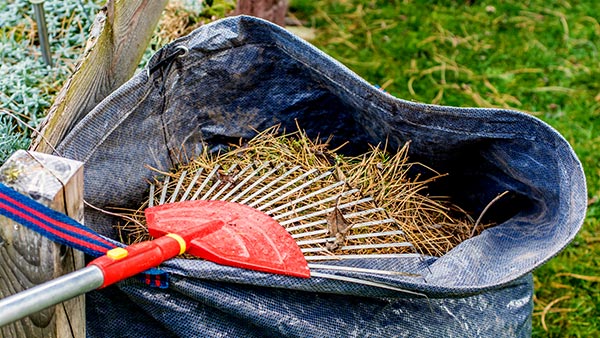
Remove dead leaves, pine needles and other debris that could ignite.
Creating defensible space around your home or business could make a major difference in whether your structure survives a wildfire.
Defensible space is “an area around a building in which vegetation, debris and other types of combustible fuels have been treated, cleared or reduced to slow the spread of fire to and from a building,” according to the Federal Emergency Management Agency.
Achieving and maintaining defensible space can help slow or stop the spread of wildfire and, most importantly, protect the safety of firefighters who may be defending your property.
If your home or business is located where development meets wildland – known as WUI or Wildland-Urban Interface — property owners should follow guidance for maintaining control of the 100 feet surrounding structures at all times, whenever possible. This is known as the Home Ignition Zone.
The HIZ consists of three zones, each to be maintained properly to create an effective defensible space.
IMMEDIATE ZONE: 0-5 FEET
- Clean roofs and gutters of dead leaves, debris and pine needles that could ignite from wind-blown embers.
- Replace or repair loose or missing shingles or roof tiles to prevent ember penetration.
- Install 1/8-inch metal mesh screening on eaves to prevent embers from passing through vents.
- Clean debris from exterior attic vents and install 1/8-inch metal mesh screening to reduce embers.
- Repair or replace damaged or loose window screens and broken windows. Screen or box in areas below patios and decks with wire mesh to prevent debris and combustible materials from accumulating.
- Move any flammable material away from wall exteriors. Consider mulch, flammable plants, leaves and needles, firewood piles – anything that can burn.
- Remove anything stored underneath decks or porches.
INTERMEDIATE ZONE: 5-30 FEET
- Clear vegetation from under large stationary propane tanks.
- Create fuel breaks (spaces with no combustibles) using driveways, walkways and paths, patios and decks.
- Keep lawns and native grasses mowed to no more than 4 inches tall.
- Remove vertical fuels (vegetation under trees) so a surface fire cannot reach the crowns. Prune lower tree branches 6 to 10 feet from the ground.
- Space trees to a minimum of 18 feet between crowns, increasing the distance as the slope on the property increases.
- Plan tree placement to ensure the mature canopy is no closer than 10 feet to the edge of the structure.
- Limit trees and shrubs to small clusters of a few each to break up the continuity of the vegetation across the landscape.
EXTENDED ZONE 30-100 FEET
- Dispose of heavy accumulations of ground litter/debris.
- Remove dead plant and tree material.
- Remove small conifers growing between mature trees.
- Remove vegetation adjacent to storage sheds or other outbuildings within this area.
- Plan or clear trees so that any 30 to 60 feet from the home have at least 12 feet between canopy tops.
- Plan or clear trees so that any 60 to 100 feet from the home have at least 6 feet between the canopy tops.
MORE INFORMATION
The National Fire Protection Association’s Home Ignition Zone information.
Cincinnati’s Wildfire Planning page
This loss control information is advisory only. The author assumes no responsibility for management or control of loss control activities. Not all exposures are identified in this article.
